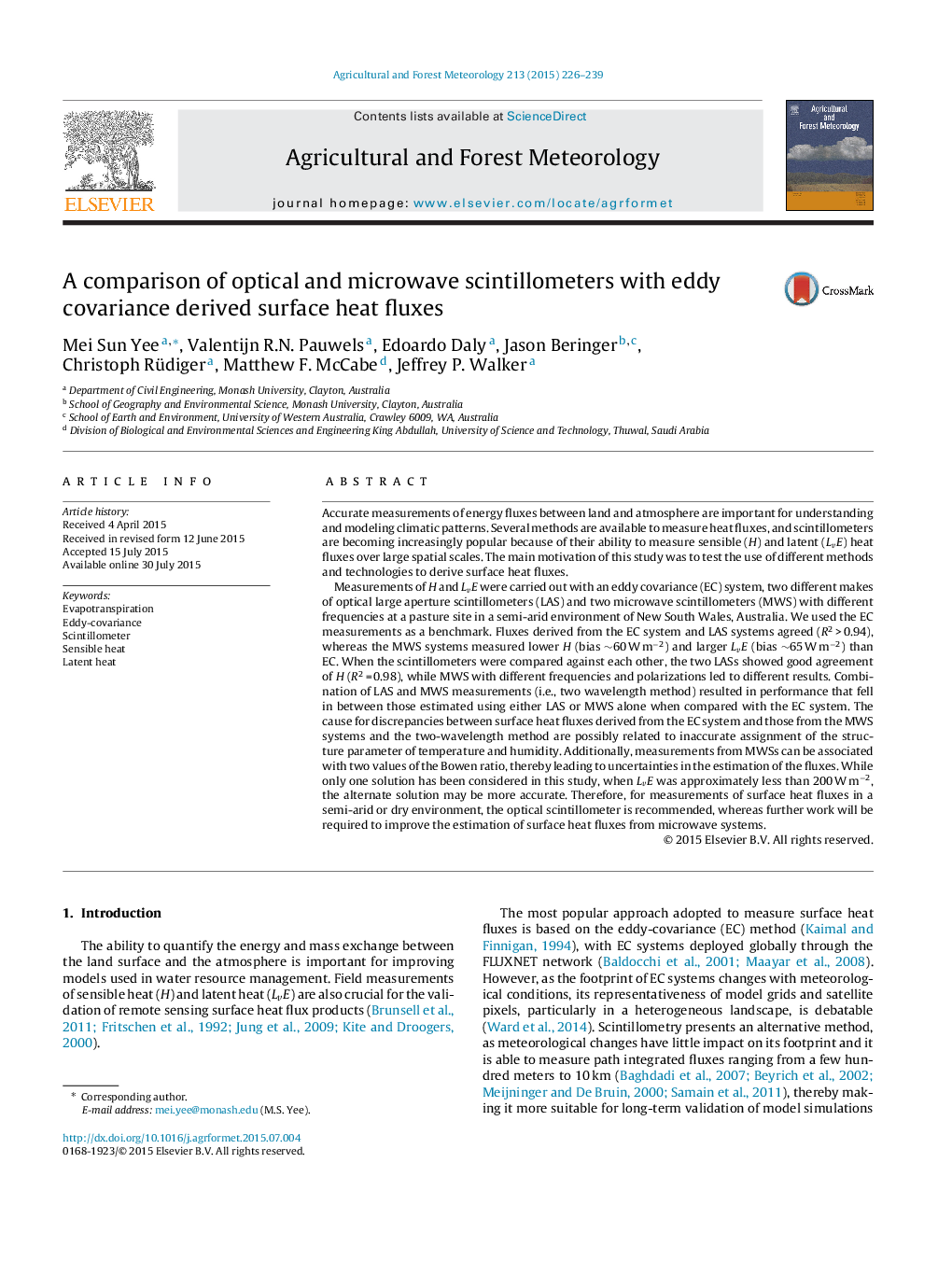| کد مقاله | کد نشریه | سال انتشار | مقاله انگلیسی | نسخه تمام متن |
|---|---|---|---|---|
| 81520 | 158320 | 2015 | 14 صفحه PDF | دانلود رایگان |
• Energy fluxes in a semi-arid pasture were measured using different instruments.
• Scintillometers measured sensible heat fluxes similar to the eddy covariance system.
• Optical scintillometers (LAS) and EC system measured similar latent heat fluxes.
• Latent heat fluxes from the microwave scintillometers differed from the EC system.
• A standalone LAS is sufficient to measure energy fluxes in semi-arid environments.
Accurate measurements of energy fluxes between land and atmosphere are important for understanding and modeling climatic patterns. Several methods are available to measure heat fluxes, and scintillometers are becoming increasingly popular because of their ability to measure sensible (H ) and latent (LvELvE) heat fluxes over large spatial scales. The main motivation of this study was to test the use of different methods and technologies to derive surface heat fluxes.Measurements of H and LvELvE were carried out with an eddy covariance (EC) system, two different makes of optical large aperture scintillometers (LAS) and two microwave scintillometers (MWS) with different frequencies at a pasture site in a semi-arid environment of New South Wales, Australia. We used the EC measurements as a benchmark. Fluxes derived from the EC system and LAS systems agreed (R2 > 0.94), whereas the MWS systems measured lower H (bias ∼60 W m−2) and larger LvELvE (bias ∼65 W m−2) than EC. When the scintillometers were compared against each other, the two LASs showed good agreement of H (R2 = 0.98), while MWS with different frequencies and polarizations led to different results. Combination of LAS and MWS measurements (i.e., two wavelength method) resulted in performance that fell in between those estimated using either LAS or MWS alone when compared with the EC system. The cause for discrepancies between surface heat fluxes derived from the EC system and those from the MWS systems and the two-wavelength method are possibly related to inaccurate assignment of the structure parameter of temperature and humidity. Additionally, measurements from MWSs can be associated with two values of the Bowen ratio, thereby leading to uncertainties in the estimation of the fluxes. While only one solution has been considered in this study, when LvELvE was approximately less than 200 W m−2, the alternate solution may be more accurate. Therefore, for measurements of surface heat fluxes in a semi-arid or dry environment, the optical scintillometer is recommended, whereas further work will be required to improve the estimation of surface heat fluxes from microwave systems.
Journal: Agricultural and Forest Meteorology - Volume 213, November 2015, Pages 226–239
